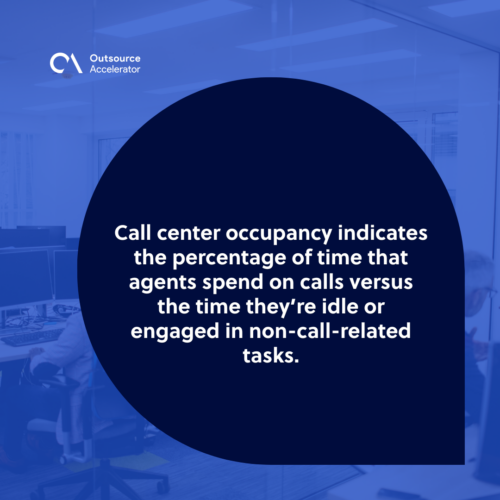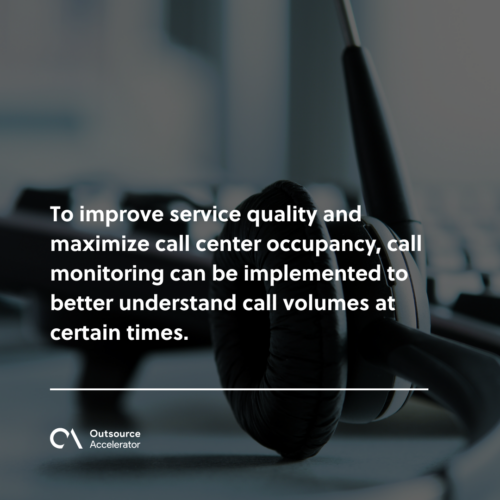Call center occupancy
Definition
What is call center occupancy?
A common call center performance metric, call center occupancy indicates the percentage of time that agents spend on calls versus the time they’re idle or engaged in non-call-related tasks. Call-related activities include conversation time, wait time, and after-call work time (ACWT).
Occupancy is often associated with utilization, but the two terms vary. Utilization helps determine overall time spent at work, including training sessions and meetings, whereas occupancy simply factors in the time when representatives are active in the call center.

How to calculate occupancy
In order to calculate an agent’s occupancy in the call center, the total handling time and the available time are important factors. The call center would have to keep track of the total logged-in time of advisors throughout the day.
Once these figures are available, the call center occupancy can be calculated by dividing the total handling time by the sum of the total handling time and the available time. Then, you may get the occupancy percentage by multiplying the result by 100.
Top ways to optimize call center occupancy rates
Determining the occupancy rate can reveal whether the call center has proper staffing. Here are ways to optimize your call center occupancy rate:
Self-service option for customers
This is one of the most important tools businesses employ to reduce the pressure on call centers these days.
Providing consumers with self-service alternatives for requesting service calls and placing and tracking transactions would lower call volumes. Further, accessing product information would help in maximizing each agent’s occupancy level.
Call monitoring
To improve service quality and maximize call center occupancy, call monitoring can be implemented to better understand call volumes at certain times.
Optimizing the occupancy of each agent during peak hours may significantly reduce the number of times consumers must wait in a queue. This reduces the amount of time spent on a single call, resulting in increased agent efficiency.
Managers can arrange training sessions and develop redressal programs for agents based on the outcomes of the monitoring process.

Agent utilization during quiet periods
Call centers receive a large volume of calls. However, there may be days when the volume of calls is low.
Managers can direct agents to conduct outbound calls to get service feedback and cross-sell goods of interest. They may also schedule training courses for agents during quiet periods to achieve the proper balance between taking client calls and lowering call center overheads.
Further, adding excitement to the workplace by establishing a competitive and team-oriented environment will not only inspire call center agents but will also help them improve their performance.
Call center outsourcing for unpredictable traffic
If forecasting customer traffic was easy, call centers would never encounter any difficulties during their shift. However, forecasting daily traffic is a difficult task.
Outsourcing, on the other hand, is one of the most convenient solutions that call centers might consider in order to supply additional resources during peak hours.
It is preferable to move resources between the primary call center and the outsourced call center rather than requiring agents to answer more calls during busy hours. This will also guarantee that each employee’s occupancy rate is as high as possible.







 Independent
Independent




